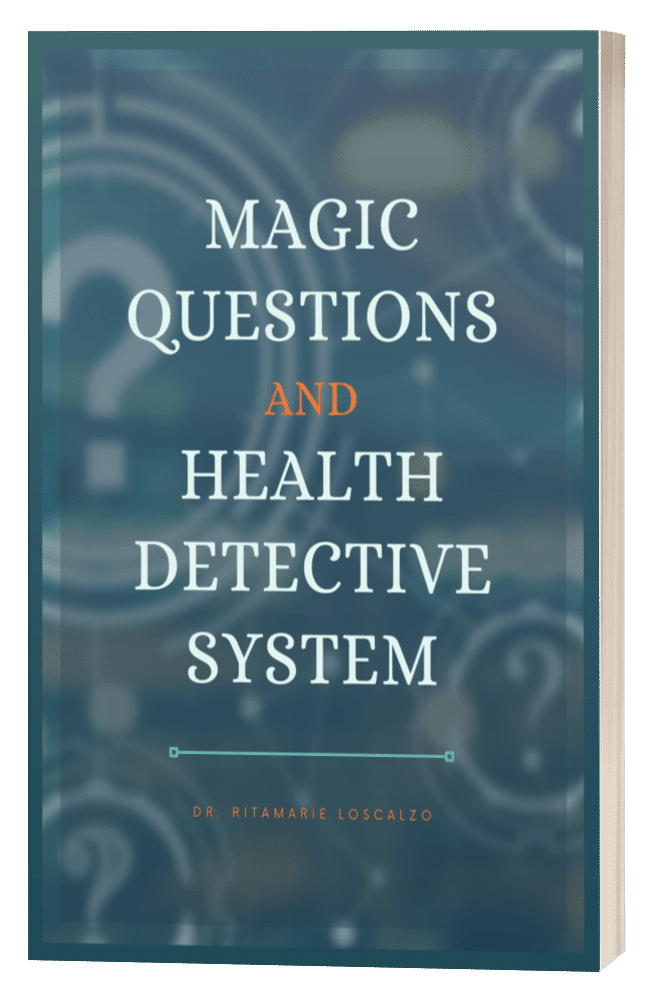HOME > blood sugar > Inflammation – The Silent Killer
Inflammation – The Silent Killer
By Ritamarie Loscalzo

In my previous post, Metabolic Syndrome – The Most Common Disease You’ve Never Heard Of, I explained how your body is a complex tapestry of interwoven systems, none of which operate independently. As a functional healthcare practitioner, my goal is to identify and help people to manage the root cause of illness, not just symptoms.
The beauty of correcting blood sugar imbalance and in turn all the conditions it contributes to, like insulin resistance and Metabolic Syndrome, is that it positively impacts all body systems regardless of their interconnected complexity. This is also proving to be especially true when it comes to inflammation.
Inflammation is drawing more and more attention as research continues to discover its direct link to cardiovascular disease, Alzheimer’s, cancer, asthma, diabetes, and autoimmune disorders such as arthritis and lupus. It may even be linked to depression.
What exactly is inflammation?
Any time your body perceives a threat, whether it be a bacteria, virus, or injury, your immune system releases an army of inflammatory cells. Their job is to either trap and eliminate the threat or begin the process of healing tissue. This results in two types of inflammation: acute and chronic.
Acute inflammation is the body’s response to injury. It usually results in visible signs of redness, swelling, tenderness, and heat. It’s critical to survival and without it our bodies would be unable to heal.
Chronic inflammation is different. It’s when the immune response is triggered by something and your body continues to send inflammatory cells even when there is no longer a threat. This can result in chronic, systemic inflammation throughout the body.
The danger of chronic inflammation.
Like insulin resistance, chronic, low-grade inflammation is viewed as a “silent” condition. It develops over time, unnoticed. There may be no visible symptoms, or there are symptoms that can be easily overlooked. Skin rash, fatigue, joint pain, and fever rarely cause alarm on their own, yet all could point to inflammation. It is slowly creating disease that can start in childhood or teenage years, but won’t show itself until later in life.
Even then, inflammation is rarely considered nor treated as the serious condition it is. Fortunately, this is changing.
Inflammation not cholesterol.
Back in the 1900s, scientists noticed that fat in the diet correlated with cardiovascular disease. For decades doctors have advised patients to reduce dietary cholesterol and saturated fat, even though cholesterol is a fat essential for the normal function of cells, liver, brain, and digestion.
It’s telling that despite the campaign against cholesterol, heart disease continued to proliferate.
Research now suggests that cholesterol only becomes dangerous when combined with inflammation. Chronic inflammation damages the arterial walls and sets the stage for plaque to develop. Calcium, cholesterol, other fats and cellular waste are all found in plaque. The inflammation also makes the plaque unstable, causing it to rupture and form blood clots that cause heart attacks and stroke.
The link between inflammation and blood sugar
Inflammation and blood sugar dysregulation have much in common. Not only do they share the same risk factors, they also contribute to the development of the same diseases, slowly and quietly. Research has also shown that inflammation can cause insulin resistance and high blood glucose contributes to inflammation.
There is no pill that prevents or cures either. And virtually all medications used to manage symptoms have a growing list of damaging side effects. The good news is, as you take steps to prevent or correct one, you help both. Making lifestyle and diet choices that support balanced blood sugar and prevent chronic inflammation will go a long way in helping you (and your patients if you’re a practitioner) to achieve optimal health.
Inflamm-aging
Chronic, systemic inflammation greatly increases the production of free radicals which ties it to premature and accelerated aging. In fact, inflammation is so closely linked to the disease process in age-related illness, it is often referred to as “inflamm-aging”.
Prevention is possible
The key to managing chronic inflammation is to get to the root cause and determine what triggers it. That will be different for each person, but some things are proven to be helpful for everyone. Not smoking or drinking alcohol to excess, managing stress with meditation or Heart Math, good sleep, moderate exercise, limited exposure to toxins, eliminating processed sugar, and maintaining a healthy weight are all beneficial.
An anti-inflammatory diet is also important. I highly recommend you begin with an elimination diet to determine what foods might be triggering inflammation. It’s a process of eliminating the most common offenders, then monitoring how you react as those foods are reintroduced.
We guide people through an elimination diet to identify food sensitivities in my Empowered Self-Care program.
Comments from my soapbox
There is this false assumption that with age comes pain, disability, and illness. I find this incredibly frustrating. This idea is so ingrained in our society that even our medical system is built around the notion it is all unavoidable. As people age it is expected that they will be on multiple medications, have mental and physical decline, and be dependent on others. Even investment accounts are now betting on the idea that everyone will eventually need assisted living! Nothing could be further from the truth. Don’t buy into it!
Did you know?
High-sensitivity C-reactive protein (hsCRP) is a byproduct of inflammation and can be checked with a simple blood test. It only indicates the presence of inflammation, not the cause, but it is valuable information nonetheless.
There are three levels:
· <1 (mg/L) = low risk
· 1-3(mg/L) = average risk
· >3 (mg/L) = high risk
And of course, given the high rate of cardiovascular disease, cancer, and autoimmune disease, who wants to be in the “average risk” category. I always strive for my patients and clients to be < 1 (low risk). In fact, I prefer them to be at .3 or less.
Be sure to ask for it to be added to your next lipid panel and suggest it to all your patients and clients.
Share this:

Are you feeling stuck?
Do you feel as if something is missing from your practice that's keeping you from delivering breakthrough outcomes for your clients?.
Recent Posts
Our Programs
Nutritional Endocrinology Practitioner Training (NEPT)
The Mastery and Certification tier is our flagship program and provides everything you need to feel confident as a practitioner who knows how to get results that lead to healthy and happy clients.
Functional Assessment Mastery
Explore the relationships between the most important hormones and their relationship with nutrition.
Functional Nutrition Mastery
Learn how to support your clients to eat and supplement in a way that reduces and eliminates chronic symptoms.
Medical Disclaimer: The information on this website is not intended to replace a one-on-one relationship with a qualified health care professional and is not intended as medical advice. It is intended as a sharing of knowledge and information from the research and experience of Dr. Ritamarie Loscalzo, drritamarie.com, and the experts who have contributed. We encourage you to make your own health care decisions based upon your research and in partnership with a qualified health care professional.
Disclosure: Sometimes (but not always), when I share resources in my programs, newsletter, and on my website, I'm using an affiliate link, which means I do make money if you buy. My credibility is extremely important to me; therefore, I only endorse the products, services, and people I believe in. DrRitamarie.com is independently owned and the opinions expressed here are my own.
Click here to see our Privacy Policy.










